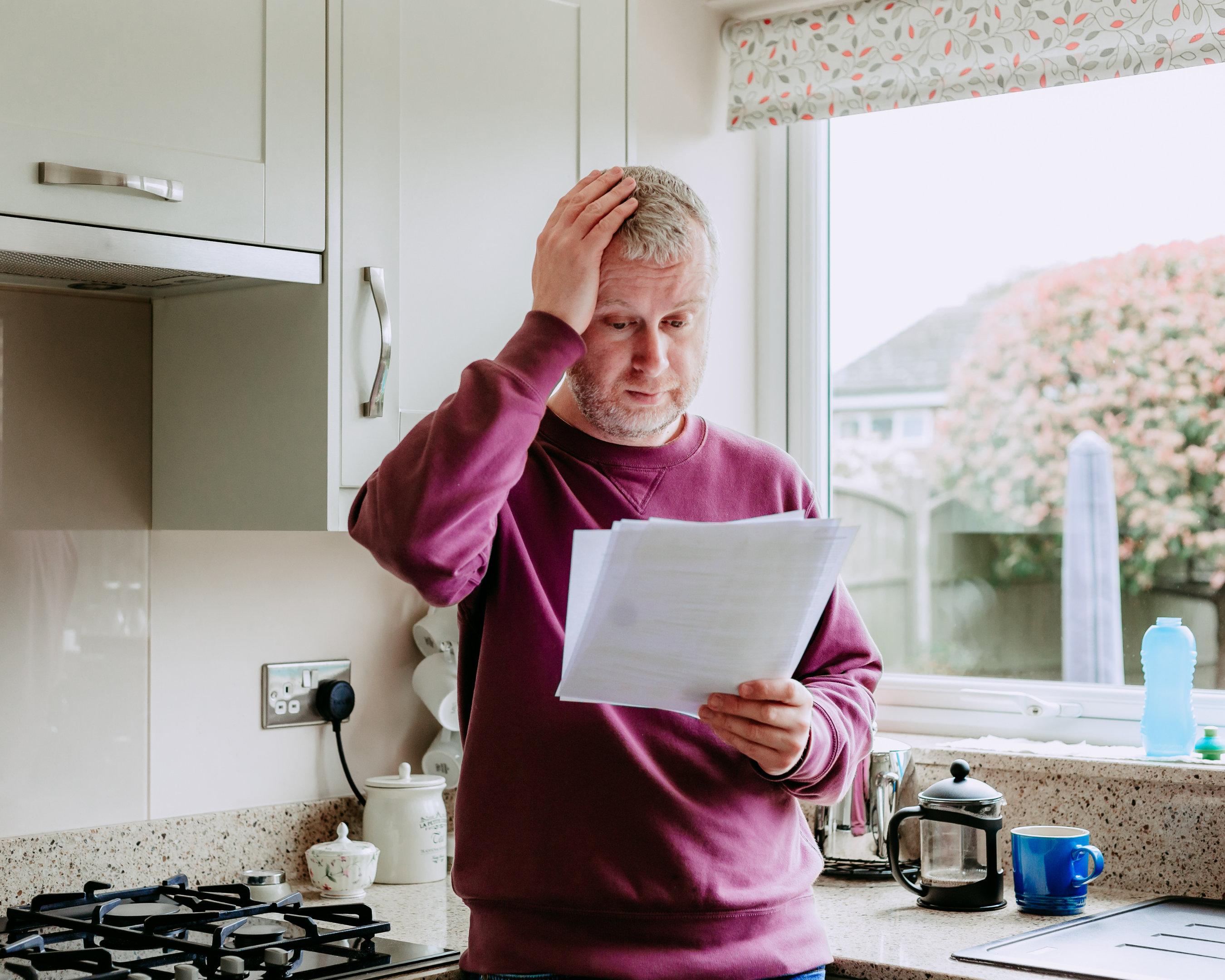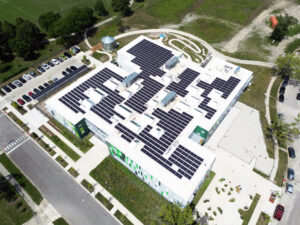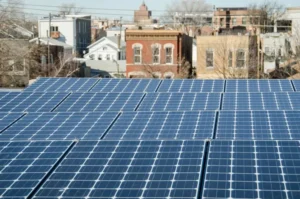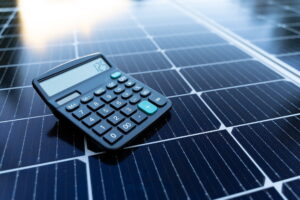
Navigating the modern energy landscape can be challenging. Energy costs are rising, and homeowners are feeling the effects. However, with strategic adjustments and innovative solutions, you can significantly reduce energy bills. Here are seven actionable steps you can take with Windfree Solar to lower your energy costs:
1. Upgrade to Energy Star Certified Appliances
Energy Star, an internationally recognized standard for energy-efficient consumer products, is a program run by the U.S. Environmental Protection Agency and the U.S. Department of Energy. Appliances that bear the Energy Star label have been certified to use significantly less energy than their conventional counterparts.
The Energy Star program sets the energy efficiency standards that appliances must meet to earn the label. These standards are based on key principles such as significant energy savings nationwide, measurable energy efficiency, non-decreasing product performance or features, and equal accessibility for all consumers.
Upgrading to Energy Star-certified appliances means that you’re investing in devices that have met these stringent energy-efficiency specifications. They utilize advanced technologies that use 10 to 50 percent less energy and water than standard models. This happens without you having to sacrifice any functionality or comfort.
For instance, an Energy Star-certified refrigerator uses less energy than a 60-watt light bulb. An Energy Star-certified washing machine uses 40 percent less energy than a standard model, and it could save you up to $50 a year on utility bills for a very small change.
The benefits of upgrading to these appliances extend beyond to reduce energy bills. When you choose Energy Star, you’re also helping to prevent climate change by reducing greenhouse gas emissions caused by energy production. As an added bonus, some regions offer rebates or tax credits for purchasing Energy Star-certified appliances, making the upgrade even more affordable.
2. Implement a Programmable Thermostat
Programmable thermostats are a modern innovation that has transformed the way we manage our home’s climate. These devices offer an efficient and user-friendly way to control indoor temperatures, delivering optimum comfort while ensuring energy efficiency.
The primary advantage of a programmable thermostat lies in its ability to automatically adjust heating and cooling settings according to your predefined schedules. This means that you can set your thermostat to lower the temperature when you’re out of the house or asleep, and have it warm up again just before you arrive home or wake up. By reducing the operation of your HVAC system when it’s not needed, you can significantly cut down on energy usage and thus reduce energy bills.
In addition to the energy-saving benefits, programmable thermostats also add a layer of convenience to your life. No longer do you need to remember to manually adjust your thermostat throughout the day or worry about forgetting to turn it down before leaving for work. With a programmable thermostat, you set your temperature preferences once, and it does the rest of the work for you.
Some programmable thermostats also offer smart functionalities. These include features such as remote access via your smartphone, learning capabilities to adjust to your routines, and integration with other smart home devices. These features provide you with more control over your home’s climate and can further reduce energy bills.
Furthermore, programmable thermostats can also contribute to a more sustainable future. By reducing your energy consumption, you’re also reducing your carbon footprint and playing a part in combating climate change.
Implementing a programmable thermostat in your home is a smart and straightforward step towards improving your home’s energy efficiency. It’s a small change that can make a significant difference in your energy bills and environmental impact.
3. Disconnect Appliances When Not in Use: An Easy Yet Effective Energy-Saving Tip
In our technologically connected world, we rely heavily on various appliances for our daily routines. From the coffee maker that brews the first cup of the day to the television we unwind with at night, our lives are intertwined with these devices. However, an often overlooked aspect of these appliances is the energy they consume even when they’re not actively in use.
Affectionately dubbed ‘vampire power,’ this refers to the electric power consumed by electronic and electrical appliances while they are switched off or in standby mode. Although these devices aren’t in active use, they continue to draw power. This might seem negligible on an individual appliance level, but when you consider the cumulative impact of all such devices in your home, the energy drain becomes significant.
The solution to this energy leak is surprisingly simple – unplug your appliances when they’re not in use. While it might take a little getting used to initially, incorporating this habit into your daily routine can lead to noticeable energy savings. You could consider it as a nightly sign-off ritual before bedtime or make it a part of your morning routine as you leave the house for the day.
Unplugging your appliances not only reduces energy bills but also extends the lifespan of your devices. Even in standby mode, appliances are subject to power surges that can damage their internal components over time. By unplugging them, you’re also improving your home’s safety as it eliminates the risks of electrical fires associated with faulty appliances.
The practice of unplugging appliances when not in use is a simple, cost-free step towards a more energy-efficient lifestyle. It’s a change that requires minimal effort but offers substantial benefits. Not only does it help reduce energy bills, but it also contributes to a collective effort to conserve energy resources and protect our environment. So the next time you switch off an appliance, take a moment to unplug it. Your wallet and the planet will thank you.
4. Evaluate Your Home’s Insulation and HVAC System
Insulation and heating, ventilation, and air conditioning (HVAC) systems play a pivotal role in maintaining a comfortable climate within your home. However, these elements are often overlooked when considering ways to lower energy costs. Paying attention to your home’s insulation and HVAC system can help identify areas where energy efficiency can be improved, leading to substantial savings on your utility bills.
Poor or outdated insulation can be a major culprit for excessive energy usage. Insulation is designed to resist heat flow, keeping your home warm during winter and cool during summer. When insulation fails to do its job effectively, your HVAC system compensates by working harder to maintain desired temperatures. This not only ramps up your energy consumption but also puts undue wear and tear on your HVAC system, potentially leading to costly repairs down the line.
Therefore, it’s crucial to evaluate the condition of your home’s insulation periodically. Check for any signs of damage, such as discolouration, compactness, or dampness. Also, consider the age of your insulation. Over time, most types of insulation tend to settle and compress, reducing their effectiveness. If your insulation is old or damaged, upgrading to a modern, more efficient product could significantly reduce energy bills.
Aside from insulation, your HVAC system itself can also be a significant energy guzzler if not maintained properly. Regular professional maintenance ensures that your HVAC system operates at peak efficiency. This includes cleaning or replacing air filters, checking for duct leaks, and ensuring all components are in good working order. Failing to maintain your HVAC system not only leads to higher energy bills but can also result in poor indoor air quality and less comfortable living conditions.
Moreover, if your HVAC system is old, it might be worth considering a replacement. Modern HVAC systems are generally more energy-efficient than their older counterparts. While the upfront cost of a new system can be high, the long-term energy savings can more than offset the initial investment.
Evaluating your home’s insulation and HVAC system is a proactive step to reduce energy bills. Regular inspections and necessary upgrades can lead to significant savings and a more comfortable home. It’s a small investment of time and effort that can yield substantial benefits in the long run.
5. Transition to Renewable Energy
Transitioning to renewable energy is one of the most impactful steps you can take to reduce your energy costs. As the planet grapples with the dire effects of climate change, the shift towards cleaner, renewable energy sources has never been more important. Among the myriad of renewable energy options available, solar power stands out for its accessibility and efficiency.
Windfree Solar, a leading provider in the renewable energy field, offers premium solar panels that can help you tap into this bountiful, clean energy source. Our panels are meticulously designed to convert sunlight into electricity efficiently, allowing you to power your home with renewable energy and reduce your reliance on fossil fuels.
While it’s true that the initial investment for setting up a solar power system can be significant, it’s crucial to consider the long-term benefits. Solar panels can lead to substantial savings on your energy bills over time. Unlike traditional energy sources with their recurring costs, the sun’s energy is free. Once installed, solar panels continually generate electricity whenever sunlight is available, providing a steady source of power for your home.
Moreover, solar power is a reliable energy source. Even on cloudy days, solar panels can still generate electricity. And with battery storage solutions, excess power generated during the day can be stored for use during nighttime or cloudy days, ensuring you have a constant energy supply.
In addition to the financial benefits, transitioning to solar energy also contributes to a more sustainable future. Solar power is a clean energy source that doesn’t produce harmful emissions, helping to reduce your carbon footprint and protect the environment.
6. Harness Natural Lighting and Ventilation: A Sustainable Approach to Reduce Energy Bills
Utilizing natural lighting and ventilation in your home is not only an environmentally friendly choice, but it can also lead to significant reductions in your energy bills. This approach capitalizes on the abundant resources provided by nature, offering a sustainable solution to energy consumption.
Natural light is a free and readily available resource. By maximizing the use of sunlight in your home, you can reduce the need for artificial lighting during the day. Consider the layout of your home and the placement of windows. Are there areas in your home that could benefit from more daylight? You can amplify the reach of natural light by using mirrors or other reflective surfaces.
On the other hand, natural ventilation involves using outdoor air to regulate indoor temperatures and air quality without resorting to mechanical systems, such as air conditioning units. This can be achieved by opening windows to allow air circulation, using fans to promote airflow, or designing your home to optimize cross-ventilation.
Moreover, strategic use of window coverings can aid in managing indoor temperatures. For instance, closing curtains or blinds during the hottest part of the day can prevent the sun from heating up your home, reducing the need for air conditioning. Conversely, opening curtains on sunny winter days allows sunlight to naturally heat your home, reducing dependence on heating systems.
Implementing these practices requires a certain level of awareness and intentionality. It might involve rethinking your daily habits and making conscious choices about how and when to use artificial lighting or mechanical ventilation. But the benefits, both in terms of energy savings and environmental impact, are well worth the effort.
Remember that every small step counts. Even minor adjustments, such as turning off lights when a room is adequately lit by sunlight, can add up to substantial energy savings over time. By harnessing natural lighting and ventilation, you’re not only reducing your energy costs but also contributing to a more sustainable and energy-efficient future.
7. Install a Water-Efficient Shower Head
One of the most straightforward adjustments that can contribute to significant energy savings in your home is the installation of a water-efficient shower head. Hot water usage accounts for a substantial portion of household energy costs. Therefore, any reduction in hot water consumption can directly translate to reduce energy bills.
A water-efficient shower head is designed to achieve maximum water flow efficiency, which means it uses less water to deliver the same level of performance as conventional shower heads. This not only leads to a reduction in water usage but also decreases the amount of energy required to heat the water, leading to dual savings.
Water-efficient shower heads utilize advanced technology to control the water’s flow rate. They are designed to maintain a high-pressure output while using less water. This is achieved by infusing air into the water stream or altering the water droplets’ direction and velocity. The result is a shower experience that feels just as satisfying as a traditional shower but uses significantly less water and energy.
Moreover, installing a water-efficient shower head is a relatively simple task that most homeowners can undertake on their own. It does not require any specialized tools or technical skills, making it a practical and cost-effective option for energy conservation.
The benefits of a water-efficient shower head extend beyond just energy savings. By reducing your hot water usage, you are also contributing to water conservation efforts, an increasingly important consideration given the growing concerns about water scarcity. Additionally, by using less energy to heat your water, you are reducing your carbon footprint and contributing to environmental sustainability.
Installing a water-efficient shower head is a small change that can have a big impact. It’s a simple, cost-effective strategy that can result in significant energy savings, contribute to water conservation, and help you play a part in protecting the environment. It’s an investment in both your wallet and the planet.
Conclusion: Reduce Energy Bills and Embrace Sustainability
Employing these energy-saving strategies can significantly reduce energy bills. Not only will you enjoy the financial benefits, but you will also contribute to a more sustainable future by reducing your carbon footprint. At Windfree Solar, we’re committed to helping you achieve these savings and sustainability goals. Don’t let high energy costs hold you back, contact us today to find out how we can help you harness the power of renewable energy.




